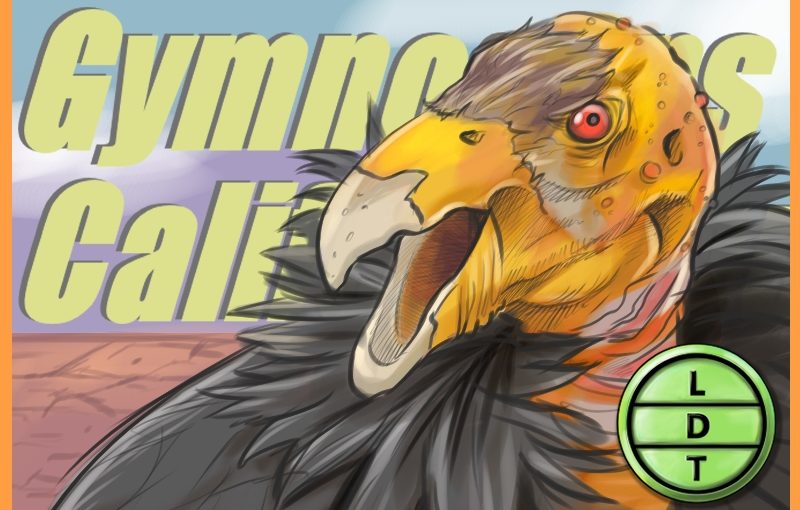“And today we’re talking about a big black buzzard the binges on bear beef but more on that later.”
When the arid American West claims a life, it doesn’t go to waste. The clean up crew soars high above the ground looking for new ways to cleanse the earth. This biological catharsis not only fills bird bellies and removes unsightly carcasses, it also returns precious nutrients to the ecosystem. But in the west, every calorie counts and using even death to preserve life is necessary in Life, Death, and Taxonomy.
Measure Up
Wingspan – 9 to 10 feet – 10 feet – How many condors go into the north to south length of California (840 miles)? – Hint: California raises more turkeys than any other state, and that’s not even a political joke. – Answer: 443,520 condors
Weight – 18 to 31 pounds – 31 pounds – How many condors go into the weight of a 10 foot Saguaro Cactus (900 pound). – Hint: The cactus stores water in spongy material to prepare for draughts, which causes the cactus to expand. Answer: 29 condors.
Major Fact
- The California Condor isn’t optimized to live in the modern American West.
- The birds have been on the decline since the 1800s and possibly earlier.
- Many started to die out when western settlers poisoned pest animals and transitively poisoned the condors.
- They could also be poisoned by lead fragments in dead animals that were shot by hunters.
- They are also electrocuted on power lines.
- Other scavenging birds face the same threats but they are better suited to surviving these issues.
- Other birds reproduce more quickly and require less food to survive.
- The CC raises on chick every two years, which is fine because the also live 60 years on average and up to 80 years.
- But if too many birds start to die before they can have many chicks, it can start to be a population problem.
- There are about 460 wild Cali Condors today, but even that number is due to intense conservation and rehabilitation efforts.
- At one time there were only 22 condors left in the wild before those birds were caught and taken into breeding programs.
- In breeding programs, the birds were taught to avoid power lines, they raised as many chicks as possible, and had bird mentors to teach them how to condor.
Why are Condors struggling more than other buzzards?
- They are what is called a biological anachronism, which is essentially an organism from a different time.
- Cali condors are adapted to a different era of like in the America’s but today their biggest strength has become their weakness.
- Their the among the largest birds on the continent but their wide wingspan helps them find food.
- They fly 55 mph, at up to 15,000 feet (4,600 meters).
- They can travel 150 miles in a day looking for food.
- However, their huge size also means they need a lot of nutrients to survive. Birds that are rearing chicks need enough to feed themselves and their offspring.
- Today, condors prefer dear, horses, bears, cattle, and other large mammals.
- But in ages past, they had more, larger options like the american bison, mammoths, and the giant sloth.
- The extinction of megafauna, which means big animals, and more hazards like power lines and human activity, Condors have a hard time surviving long enough to contribute to their population.
- However, conservation efforts seem to b helping. Birds released into the wild have been able to survive and breed on their own.
Like the government worked to conserve the American Condor, you can work to conserve this podcast by spreading the word! Leave a review on your favorite podcast app and tell your friends! At the end of the day, your bud are more likely to listen to you than a five star review, though we still appreciate those little stellar accolades. And as always, we need measure up intros. Thanks for listening and engaging.

